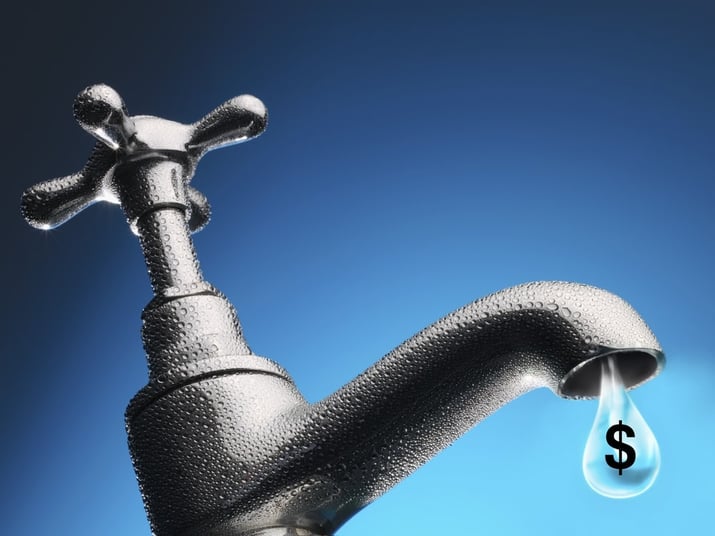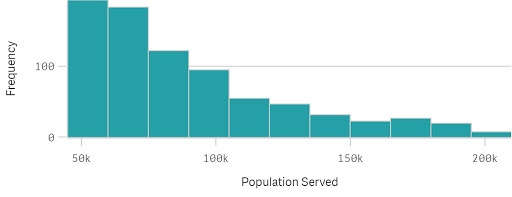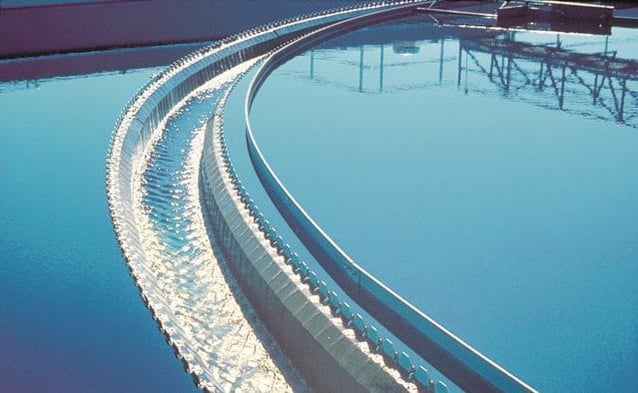Do you ever find yourself frustrated with the US Water Market? We speak to many providers of consulting, engineering, and technical services that appreciate and value the water market, but express some frustration related to the speed of project awards and the lack of infrastructure funding.
According to the 2018 American Water Works Association State of the Water Industry report, renewal and replacement of aging water infrastructure is the top concern among survey respondents. Infrastructure investments continue to lag behind demand, while problems with delivered water quality are a top concern for example with issues relating to unsafe levels of lead.
All of us know that the US water infrastructure needs an overhaul, and this should generate substantial opportunities. However, as industry experts we also know that this is not an easy undertaking.
As a business leader serving North American water markets, you know that a passive approach to the market is not the best one. Those companies positioning themselves in the most-strategic fashion, applying Business Intelligence (BI) to their marketing and sales initiatives, have a better opportunity to thrive in this market.
Segment the Water Utility Market

We are passionate about this market because of its importance in the lives of most of the US population who depend on clean, safe drinking water from their utility. As capital spending increases to catch up with long-term demand, many supporting industries and organizations will benefit:
● Architecture, Engineering, and Consulting (AEC) firms
● Trade-level subcontractors
● Equipment and material providers
● Technology suppliers
The market is diverse, in terms of the organizations involved and geography covered, so effective market segmentation is important.
Types of Organizations
The US Water Market, from a public drinking water perspective, consists primarily of the following drinking water systems:
● Public,
● Private,
● Investor-owned
Sub-markets
You can also separately consider the following substantial and interconnected markets:
● Wastewater
● Storm water
● Water reuse
Here we'll focus on drinking water.
Drinking water segmentation by the numbers
As an organization serving this market, you already know that there are nearly 50,000 permanent (non-transient) public drinking water systems in the US. These systems are permitted by the US Environmental Protection Agency (EPA).
The distribution of these systems, based on the population served, shapes our perspective.
■ At the high end, the New York City Department of Environmental Protection (NY DEP) serves a population of more than 8,000,000. This is an outlier, however, since only a small fraction, approximately 150 (less than 0.3%), serve populations greater than 250,000.
■ Looking at those that serve populations of 25,000 to 250,000, the number is nearly 2000, or 4% of utilities. The Histogram for this data is interesting. Note that there is a strong weighting on smaller-sized drinking water systems.

■ Beneath the top 150 utilities, there is plenty of business in this tier of 2000 utilities serving 25,000 to 250,000. It is a big decision, however, to focus on the smallest utilities in this group since as the utility size decreases, the count rapidly increases.
- Careful consideration should be made before deciding to work on that next group of prospective customers. "
Optimize Your Go-to-Market

We've only considered one FirmoGraphic detail here, so far, that is the population served by a utility. This is only one of many parameters that may be considered insofar as your own approach to the addressable utility market. Most providers have limited marketing, sales, and business development resources, and how to deploy them is an ever-changing optimization question.
Focus Your Resources
Consider these topics in focusing your precious resources to develop the best utility customers:
► Size. Other than the population served, how would you measure size? Staff? Customer mix, between residential, multi-family, commercial, and agricultural? For your chosen parameter, which utilities are your best prospects?
► Operations. The way you measure operational fit for your offerings will depend on what makes a well-qualified prospect. Do they purchase and distribute water, or run their own treatment plants? Is it a combined water and wastewater utility? What is the source of their water? How many treatment plants do they operate?
► Geography. Are you strongest in a certain geography, due to resource locations, competition, or other factors?
Also Consider These Items
Depending on your own focus, these areas can also be important:
► Financial Strength. What sort of debt ratios does the utility have? What is the history of rate increases to make additional operating funds available? This and other information may be available in the Comprehensive Annual Financial Report (CAFR).
►Capital Plans. What are the utility Capital Improvement Plans (CIP), and what do these forebear with respect to demand for your own goods and services?
►Relationships. What is the status of your relationship to each utility, and that of your competition? How has your revenue trended over the years? What is your win rate on bids? Given the turnover of utility staff, often related to retirement of senior contacts, how secure is your overall footing in the account?
► Special circumstances. Is the utility facing active regulatory or customer issues that make them more or less suitable as a customer?
You have an idea of your ideal customer’s profile. Some combination of the questions posed and other information will help you define the best segments of your target utility market. Then, you can marshal your resources to focus on the most important relationships, your best current and future customers.
Wrapping Up

You can see that our vital, challenging Water Market is best-approached with a strategic mindset. If this is a challenge the solution maybe Business Intelligence (BI).
The FirmoGraphs Water Mart is a complete, ready-to-use BI solution to enable your go-to-market with utility customers.
FirmoGraphs closely follows the utility industry. Click here to learn more.
Click here to download our E-Book with 5 Critical Actions for Insight-Driven Marketing.
You might also want to read our blog America’s Water Infrastructure Act.
Disclaimer
None of the information we provide may be taken as legal advice. Please consult an attorney if you require a legal interpretation of this information.
Any information contained on this website or within any attachments is offered without representation or warranty as to its accuracy or completeness and FirmoGraphs, LLC cannot be held responsible for loss or damage caused by errors, omission, misprints or your misinterpretation of such information. Seek competent professional advice prior to relying on or utilizing such information in any manner as any such use is at your own risk.
Tags:
Business Intelligence, Water Utility, water utility industry, utility water, what is water utility




